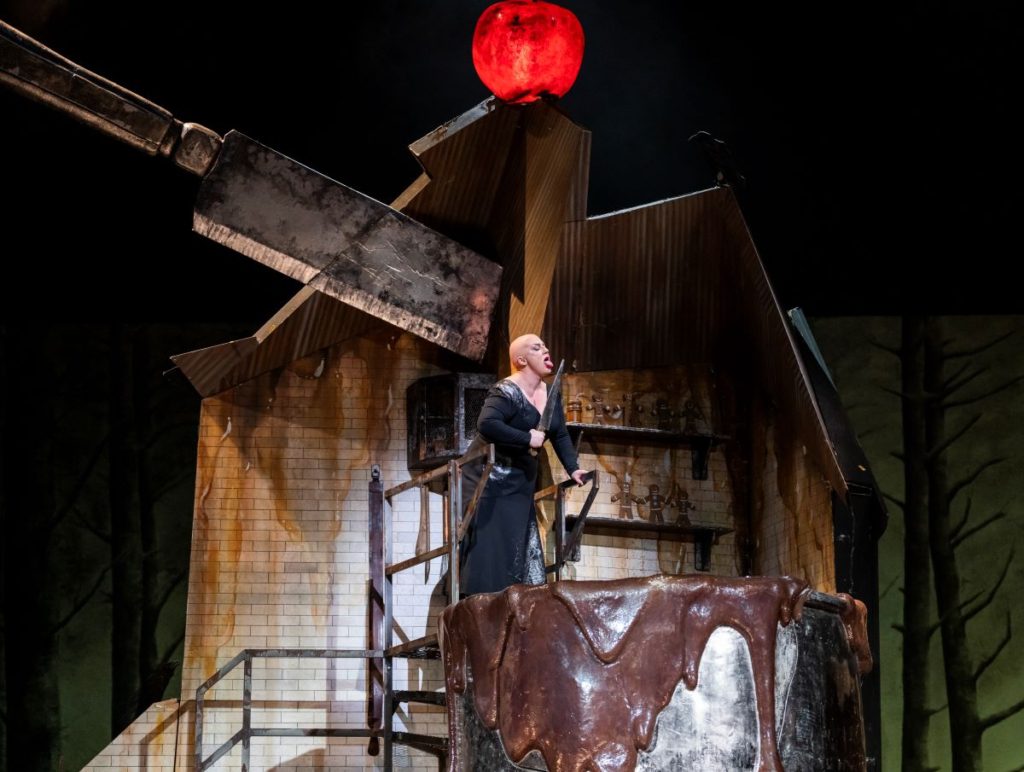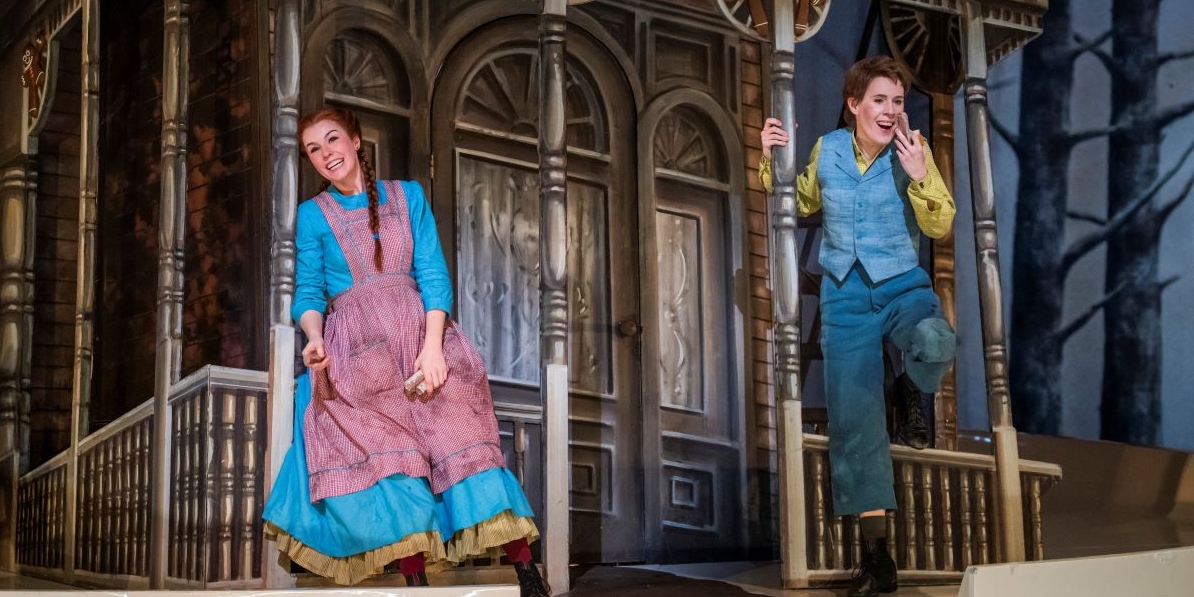Hansel and Gretel is one of Grimm’s Fairy Tales. Written for adults, not children, they were considered too dark as the violence is mainly directed towards children. The Juniper Tree, The Robber Bridegroom and Snow White are particularly nasty. Grimm’s plots would be considered inappropriate today.
The moral to be taken from Humperdinck’s Hansel & Gretel nowadays, is simply ‘don’t take sweets from strangers!’
This production opened five years ago in its original German. This is another new translation, but does not capture the essence of the original. I have sung in many translated operas; the universal problem is the extra syllable. That is why ‘now’ or ‘then’ is added at the end of phrases to fit the music, for example – ‘andiamo’ (three syllables) becomes ‘let’s go now’ or ‘we’re off then’. These filler words should be avoided; here they are not. Furthermore, domestic violence has no place in this story, so when Peter discovers the children are gone, Gertrude cowers saying ‘don’t hit me’. This is a cheap way of jumping on a topical bandwagon.
The action filling in musical interludes is appealing. The overture shows how the family fall into poverty, having plenty to eat, and then have nothing. Hansel has been reading Grimm’s Tales; later, whilst the children sleep in the woods, Grimm’s characters come to life in their dreams – Snow White, Cinderella, Little Red Riding Hood, Rapunzel. A huge moth climbs the side of the stage, a bat drops down, animals scamper across the stage.
The production is drab and dull: the woods are unrealistic. Without the oven there is not even a spark let alone crackle. Even the Swiss cuckoo clock with the time twirling round becomes tedious. The folk-tune based music, is much repeated. The Sandman and Dew Fairy’s songs are virtually identical. Gold dust falling for the Sandman is pretty; the paper angels are tacky. The Witch, usually burnt in an oven, is instead pushed into a huge chocolate vat. There is lacklustre joy when the gingerbread children come to life; their parents, usually present, are not there. Those children gruesomely eat the witch’s chocolate limbs from the smashed-open vat.
The highlight should be the witch’s house. Why should the children be attracted by Hitchcock’s Psycho house with a knife through it, blood-stained windows and skewered ginger-breaded children pasted to the window? The only slightly interesting is the giant flashing cherry on top. The stairs are a shiny chocolate colour, there are no lebkuchen or obvious edibles (I searched with binoculars); the children are forced to gobble the bannisters!

It is good that the Witch is sung by a woman, instead of the male pantomime Dame. The Witch strips off her attractive attire becoming her real self, but why is she unnecessarily bald?
When Jamie Barton won Cardiff Singer of the World in 2013 with the Witch’s Song, nobody thought of this as a real competition-winner before. She stole the show. This has become a bar to be held high and grabbed by anyone singing the Witch. The bar was not grabbed; no stolen show.
French/English mezzo Anna Stéphany displays a warm mezzo tone, and, at 46, is a convincing boy. British mezzo Susan Bickley as Mother has problems with top note production, but rumour has it that a bug is going around the cast, so maybe that is why. The other singers are good, but nobody stands out.
Visual technology has improved beyond recognition; the possibility of creating a (cheaper) 3D wonderland to replace more expensive sets is the way to transform this opera into something magical and spectacular.
This show is for children and a lovely way of introducing them to opera. Taking into account the price of the tickets, it is debatable whether this show is worth the money.

